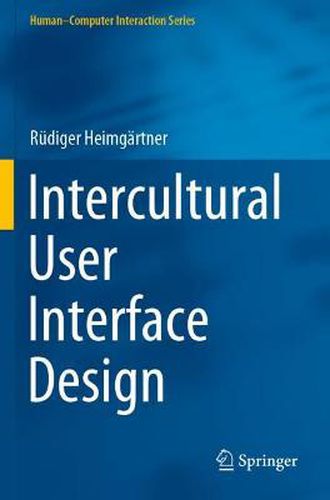Readings Newsletter
Become a Readings Member to make your shopping experience even easier.
Sign in or sign up for free!
You’re not far away from qualifying for FREE standard shipping within Australia
You’ve qualified for FREE standard shipping within Australia
The cart is loading…






This title is printed to order. This book may have been self-published. If so, we cannot guarantee the quality of the content. In the main most books will have gone through the editing process however some may not. We therefore suggest that you be aware of this before ordering this book. If in doubt check either the author or publisher’s details as we are unable to accept any returns unless they are faulty. Please contact us if you have any questions.
The path for developing an internationally usable product with a human-machine interface is described in this textbook, from theory to conception and from design to practical implementation. The most important concepts in the fields of philosophy, communication, culture and Ethnocomputing as the basis of intercultural user interface design are explained. The book presents directly usable and implementable knowledge that is relevant for the processes of internationalization and localization of software. Aspects of software ergonomics, software engineering and human-centered design are presented in an intercultural context; general and concrete recommendations and checklists for immediate use in product design are also provided. Each chapter includes the target message, its motivation and theoretical justification as well as the practical methods to achieve the intended benefit from the respective topic.
The book opens with an introduction illuminating the background necessary for taking culture into account in Human Computer Interaction (HCI) design. Definitions of concepts are followed by a historical overview of the importance of taking culture into account in HCI design. Subsequently, the structures, processes, methods, models, and approaches concerning the relationship between culture and HCI design are illustrated to cover the most important questions in practice.
$9.00 standard shipping within Australia
FREE standard shipping within Australia for orders over $100.00
Express & International shipping calculated at checkout
This title is printed to order. This book may have been self-published. If so, we cannot guarantee the quality of the content. In the main most books will have gone through the editing process however some may not. We therefore suggest that you be aware of this before ordering this book. If in doubt check either the author or publisher’s details as we are unable to accept any returns unless they are faulty. Please contact us if you have any questions.
The path for developing an internationally usable product with a human-machine interface is described in this textbook, from theory to conception and from design to practical implementation. The most important concepts in the fields of philosophy, communication, culture and Ethnocomputing as the basis of intercultural user interface design are explained. The book presents directly usable and implementable knowledge that is relevant for the processes of internationalization and localization of software. Aspects of software ergonomics, software engineering and human-centered design are presented in an intercultural context; general and concrete recommendations and checklists for immediate use in product design are also provided. Each chapter includes the target message, its motivation and theoretical justification as well as the practical methods to achieve the intended benefit from the respective topic.
The book opens with an introduction illuminating the background necessary for taking culture into account in Human Computer Interaction (HCI) design. Definitions of concepts are followed by a historical overview of the importance of taking culture into account in HCI design. Subsequently, the structures, processes, methods, models, and approaches concerning the relationship between culture and HCI design are illustrated to cover the most important questions in practice.